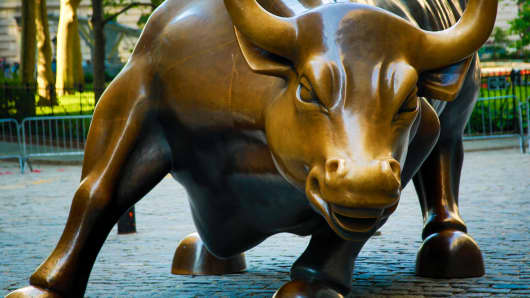The quality of the rally—on low-quality stocks—as well as the weak earnings season prospects and discord in Washington over sequestration spending cuts and the debt ceiling could spell market trouble, Saut said.
Bespoke Investment Group breaks out the S&P 500 in 10 50-stock groups and breaks down their performance by type.
Among its findings:
- The 50 biggest stocks gained 13.3 percent; the 50 smallest stocks surged 21.9 percent.
- The 50 stocks with the lowest P/E ratios rose 26.7 percent; the 250 with the highest P/E ratios were up far less.
- Stocks with no dividend yield gained 19.9 percent, outperforming the high dividend-yielders, particularly as interest rates rose.
- The 50 stocks with the weakest analyst ratings surged 22.7 percent.
Sound bad?
Actually, there might be some love out there for the ugly bulls stampeding through Wall Street.
(Read More: 10 Things You Need to Know About the First Half)
Jim Paulsen, the chief market strategist at Wells Capital Management, said the high-beta qualities of the best performers are exactly what you would expect of a market getting its mojo back after years of no confidence.
"The stuff you just named coming into leadership is the essence of confidence. When confidence emerges everything you just listed would be at the top of your list to buy," Paulsen said in a phone interview.
"What this rally's about—even going back to last fall—is about giving up the Armageddon ghost and accepting that this is a more sustainable recovery," he added. "If you suddenly developed confidence in sustainability you wouldn't latch onto low-beta high-dividend stocks. You'd put on a little octane."
That octane, though, looks like it's fueling a lot of old junkers.
—By CNBC's Jeff Cox. Follow him @JeffCoxCNBCcom on Twitter.





